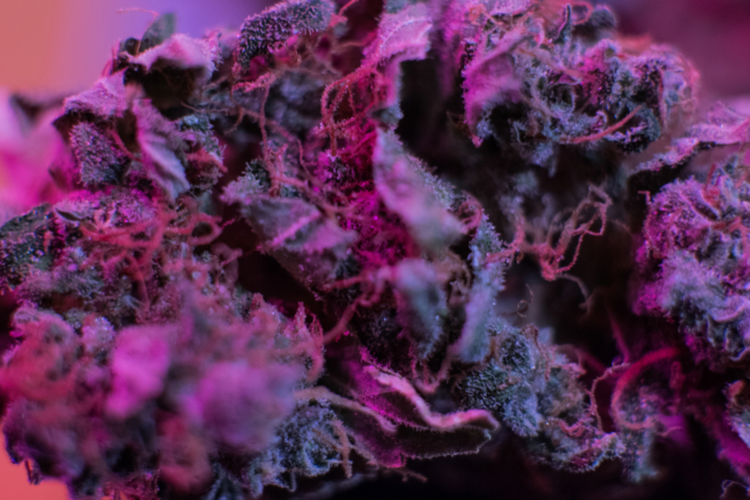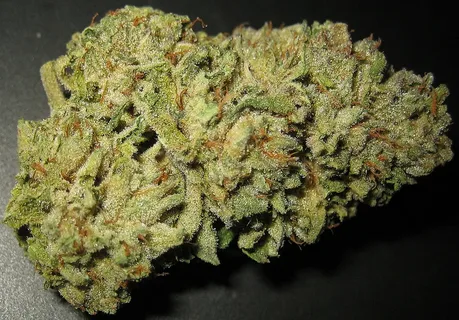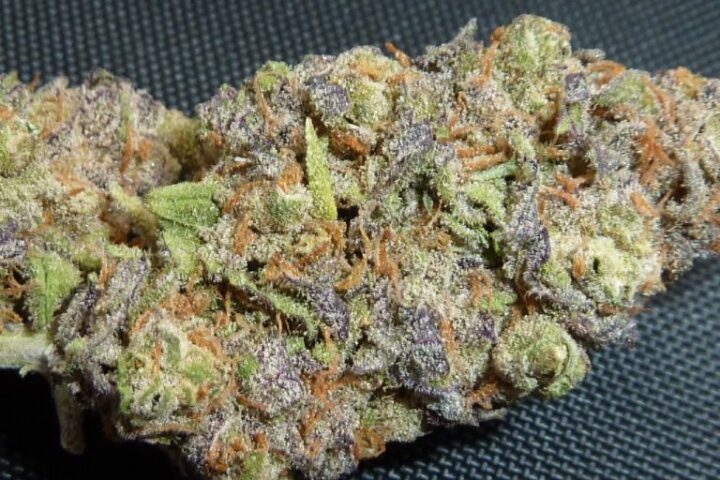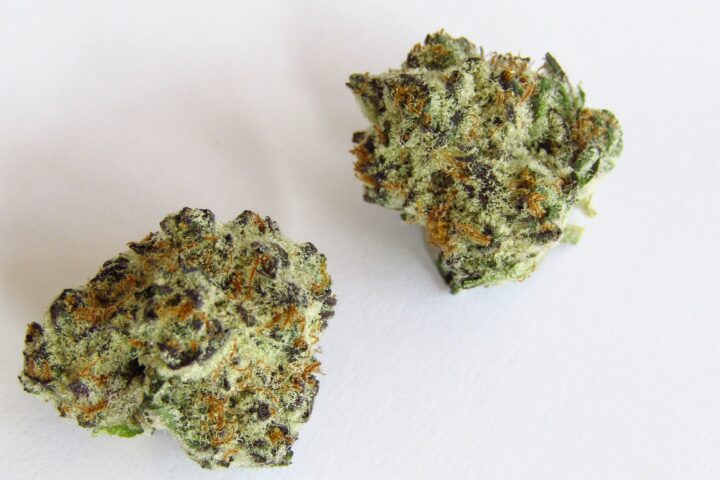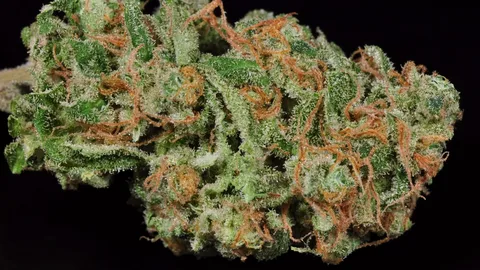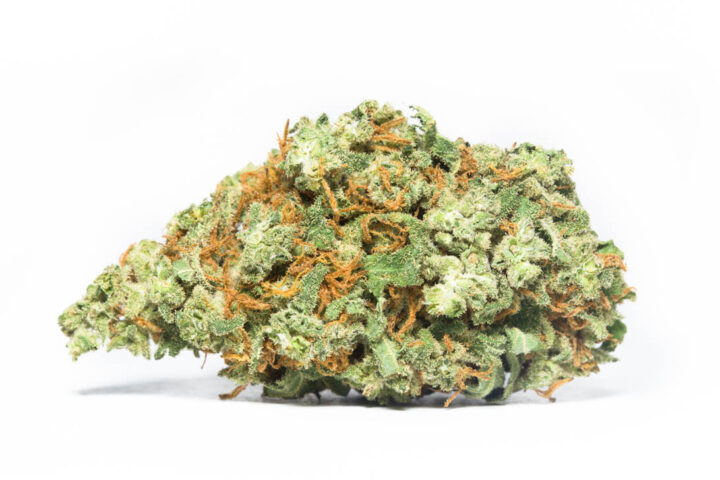Origin and Genetics
Violet Fog’s Breeding History
Violet Fog is an indica-dominant cannabis strain that has gained popularity among consumers for its unique and potent effects. As with any cannabis strain, the origin and genetics of Violet Fog play a significant role in understanding its characteristics and behavior.
The exact origin of Violet Fog is not well-documented, but it is believed to have been bred by an unknown strain developer or breeder. The parent strains are not publicly disclosed, which adds to the mystery surrounding this particular variety. However, based on its effects and appearance, it can be inferred that Violet Fog was developed from a combination of indica-heavy genetics.
The indica-dominant characteristic of Violet Fog suggests that it has been bred with strains that are known for their high levels of cannabidiol (CBD) and low to moderate levels of tetrahydrocannabinol (THC). The exact CBD: THC ratio is not publicly available, but the strain’s effects suggest a balanced and relaxing profile.
Violet Fog’s breeding history is likely complex and involves multiple generations of selective breeding. The breeder(s) may have aimed to emphasize specific traits such as potency, flavor, or effect, which contributed to the strain’s development over time.
The genetics of Violet Fog are likely influenced by its parent strains, which can be categorized into indica and sativa types based on their cannabinoid profiles. Indica-dominant strains tend to have higher levels of CBD and lower levels of THC compared to sativa-dominant strains, which can contribute to a more relaxing and calming effect.
The breeding process for Violet Fog likely involved careful selection of individual plants with desirable traits such as potency, flavor, or resistance to pests and diseases. The breeder(s) may have used techniques such as cross-breeding, backcrossing, and self-pollination to create a stable and consistent strain.
Violet Fog is a rare strain of cannabis known for its unique purple hue, developed through selective breeding by expert growers.
The origin of Violet Fog cannabis strain dates back to the selective breeding practices of experienced cultivators who aimed to create a unique and sought-after variety.
Violet Fog is a rare strain that stands out due to its distinct purple color, a result of high concentrations of anthocyanins in the plant’s pigmentation. Anthocyanins are powerful antioxidants responsible for the red, purple, or blue colors found in various fruits and vegetables.
The genetic makeup of Violet Fog has been influenced by a combination of indica and sativa genetics, likely resulting from breeding Indica-dominant strains with specific Sativa-based characteristics.
Genetic Composition
Violet Fog’s genetic profile can be broken down into several key components:
- Sativa Dominance: Violet Fog exhibits traits common in Sativa-dominant strains, including tall height and elongated leaf shape. These characteristics contribute to the strain’s unique appearance and may also influence its growth pattern.
- Indica Influence: The Indica genetic background in Violet Fog contributes to its compact flowering structure and fast maturation times. This blend of genetics helps create a balanced effect, often sought after in hybrid strains.
Cannabinoids and Terpenes
The exact cannabinoid and terpene profile of Violet Fog is not as extensively documented as other popular cannabis strains. However, based on general observations and reviews, it’s believed that this strain contains a balanced mix of:
- THC (Tetrahydrocannabinol): The primary psychoactive compound in Violet Fog, responsible for its euphoric effects.
- CBD (Cannabidiol): Present in smaller concentrations compared to THC, CBD contributes to the strain’s therapeutic benefits and may help mitigate some of the psychoactive effects.
The unique combination of terpenes in Violet Fog, including myrcene, limonene, and caryophyllene, is thought to enhance its medicinal properties and contribute to its distinctive aroma.
Cannabis Science at Work
- Cannabis science has made significant advancements in recent years, allowing us to better understand the complexities of this versatile plant and its effects on humans.
- The origin of cannabis is shrouded in mystery, with some attributing it to South Asia, while others claim it originated in Tibet or even China
- However, most researchers agree that the plant spread throughout the world through human migration and trade, adapting to different environments and climates along the way.
- Cannabis genetics play a crucial role in understanding its various effects on humans. The plant contains over 100 THC-like compounds, with the most well-known being tetrahydrocannabinol (THC) and cannabidiol (CBD)
- These compounds interact with our endocannabinoid system (ECS), which regulates various physiological processes such as mood, appetite, sleep, and pain perception. The ECS is comprised of cannabinoid receptors, primarily found in the brain and nervous system.
- The Violet Fog strain is a popular hybrid variety that boasts a unique blend of indica and sativa characteristics. Its genetics have been carefully crafted to produce a high-quality product with desirable effects.
- This strain typically contains between 15-20% THC and minimal (CBD) content, making it ideal for those seeking a potent yet relaxing experience. The exact composition may vary depending on growing conditions and cultivation techniques.
- When consumed, Violet Fog produces an intense cerebral effect, characterized by creativity, energy, and euphoria. As the high progresses, the indica side of this strain takes over, promoting deep relaxation, calmness, and sleepiness.
- This unique balance of effects has made Violet Fog a favorite among cannabis enthusiasts who value its potential to boost focus and motivation while reducing stress and anxiety.
The genetic makeup of Violet Fog is shrouded in mystery, but research suggests that it may be a result of crossing indica and sativa strains with other, as yet unidentified varieties.
The origin of Violet Fog is still not well understood, but it is believed to be a result of selective breeding and hybridization of various cannabis strains.
Cannabis strains can be broadly categorized into two main types: indica and sativa. Indica plants are typically shorter, bushier, and have wider leaves with a more relaxing and sedating effect on users. Sativa plants, on the other hand, tend to grow taller, have narrower leaves, and produce a more energizing and stimulating high.
Researchers suggest that Violet Fog may be the result of crossing indica and sativa strains with other unidentified varieties, which could contribute to its unique genetic makeup.
This process of selective breeding involves choosing specific traits from different parent plants and combining them to create new hybrids. Breeders can select for desirable characteristics such as potency, flavor, aroma, and growth habits.
In the case of Violet Fog, it’s possible that breeders crossed indica and sativa strains with other cannabis varieties that possess unique genetic traits, resulting in a strain with distinctive effects and characteristics.
It’s worth noting that the genetic makeup of Violet Fog is not well understood, and more research is needed to determine its exact origin and composition. However, it’s clear that this strain has been carefully crafted through selective breeding and hybridization techniques.
The unique genetic combination of Violet Fog may contribute to its reported effects, which include relaxation, euphoria, and a sense of calm. The strain may also possess a distinct flavor profile and aroma, with notes of earthy undertones and sweet, floral hints.
Further research is needed to fully understand the genetic makeup of Violet Fog and its potential applications in the medical and recreational cannabis industries.
Effects and Benefits
Pain Relief and Relaxation
The Violet Fog weed strain is a popular choice among cannabis enthusiasts due to its numerous effects and benefits, particularly when it comes to pain relief and relaxation.
Effects
- Cerebral stimulation: This strain is known for providing a clear-headed and focused high, making it ideal for creative tasks or activities that require mental clarity.
- Euphoria: The combination of terpenes and cannabinoids in Violet Fog can produce a sense of happiness and euphoria, leaving users feeling uplifted and content.
- Relaxation: As the high wears off, Violet Fog tends to induce a deep sense of relaxation, making it perfect for unwinding after a long day or managing stress and anxiety.
Benefits
- Pain relief: The pain-relieving properties of Violet Fog make it an excellent choice for managing chronic pain, inflammation, and discomfort associated with various medical conditions.
- Appetite stimulation: This strain can increase appetite in some users, making it beneficial for those struggling with weight loss or experiencing a decrease in appetite due to certain medications.
- Sleep aid: The relaxing effects of Violet Fog can help improve sleep quality and duration, promoting restful slumber and addressing insomnia-related issues.
Pain Relief
Violet Fog’s ability to alleviate pain makes it a sought-after strain among medical cannabis patients. Its analgesic properties can effectively manage various types of pain, including:
- Chronic pain: Violet Fog can help reduce the frequency and severity of chronic pain episodes.
- Inflammation: The strain’s anti-inflammatory properties can decrease swelling and discomfort associated with inflamed joints, muscles, or other tissues.
- Migraines and headaches: Violet Fog may provide relief from migraine and headache symptoms by reducing pain, inflammation, and pressure in the head and neck regions.
Relaxation
Violet Fog’s relaxing properties make it an excellent choice for managing stress, anxiety, and promoting overall well-being. Its sedating effects can help users unwind and relax, reducing feelings of tension and promoting a sense of calm.
How to Use Violet Fog
When using Violet Fog, consider the following methods:
- Inhalation: Vaping or smoking Violet Fog can provide an intense and immediate effect, making it suitable for managing acute pain or stress.
- Eatables: Consuming Violet Fog-infused edibles or baking with this strain can produce a more gradual and long-lasting effect, ideal for managing chronic pain or promoting relaxation over time.
Users report experiencing relief from chronic pain, insomnia, and anxiety after consuming Violet Fog.
- Violet Fog is a popular cannabis strain that has gained widespread attention for its potential therapeutic benefits.
- The effects of Violet Fog are often described as calming and relaxing, making it an ideal choice for individuals seeking relief from chronic pain, insomnia, and anxiety.
- User reports suggest that the strain provides effective pain management, helping to alleviate symptoms associated with various conditions such as arthritis, fibromyalgia, and multiple sclerosis.
- Furthermore, Violet Fog is said to promote a good night’s sleep, thanks to its sedative properties which can help regulate the body’s sleep-wake cycle and improve overall sleep quality.
- The strain is also believed to have anxiolytic effects, reducing feelings of stress and anxiety in users.
- Many people have credited Violet Fog with helping them manage their mental health conditions, including depression and post-traumatic stress disorder (PTSD).
- The benefits of Violet Fog are not limited to its therapeutic effects; the strain is also known for its unique flavor profile and aroma, which many users find enjoyable.
- Overall, Violet Fog has gained a reputation as a reliable and effective cannabis strain that can provide relief from various health conditions while promoting relaxation and reducing stress levels.
Conversational Tone and Mood Boost
The effects of Violet Fog weed strain are characterized by its balanced and sedating properties. It is known to produce a calming sensation, often referred to as “euphoria,” which can last for several hours after consumption.
The benefits of this strain include relief from chronic pain, inflammation, and anxiety. It has also been found to improve sleep quality and reduce stress levels in individuals who use it.
One of the standout features of Violet Fog is its ability to induce a sense of relaxation without causing drowsiness or disorientation. This makes it an ideal choice for those looking to unwind after a long day without feeling lethargic or foggy-headed.
The conversational tone associated with this strain is often described as calming and soothing, with hints of sweetness and fruitiness. The flavor profile typically includes notes of lavender, vanilla, and citrus, making it a popular choice for those who enjoy smooth and subtle strains.
When it comes to mood boost, Violet Fog weed strain has been found to have a significant impact on individuals’ mental states. It can help alleviate feelings of sadness, anxiety, and stress by inducing a sense of calmness and tranquility.
The relaxing properties of this strain also make it an excellent choice for social gatherings or events where individuals may feel anxious or overwhelmed. By consuming Violet Fog, they can quickly calm their nerves and engage in conversations with others without feeling uneasy or tense.
Some users have noted that this strain can induce a conversational tone and a mood boost due to its potential high THC content.
The Violet Fog weed strain has been observed by some users to have a profound impact on their mood, leading to a noticeable increase in feelings of euphoria and happiness.
This phenomenon is believed to be largely due to its high THC content, which can activate the brain’s reward system and release endorphins, also known as “feel-good” hormones.
As a result, users who partake in Violet Fog have reported an enhanced sense of well-being and a more optimistic outlook on life, with some even experiencing improved creativity and motivation.
The conversational tone that this strain induces is thought to be another benefit of its potent THC content, as it can lead to increased sociability and the ability to engage in meaningful conversations with others.
For those who struggle with anxiety or stress-related disorders, Violet Fog may provide a sense of calm and relaxation, helping users to better manage their emotions and feel more grounded.
However, it is essential to note that individual reactions to this strain can vary greatly, and some users may experience negative effects such as paranoia or increased heart rate due to its high THC content.
It is crucial for consumers to be aware of their own tolerance levels and to approach consumption with caution, starting with low doses and gradually increasing as needed and under medical supervision if necessary.
In conclusion, the potential benefits of Violet Fog, including mood boost, increased creativity, and sociability, make it an appealing option for those seeking a unique cannabis experience.
Cultivation and Growing Tips
Nutrients and pH Levels
Cultivating Violet Fog weed strain requires attention to detail, a suitable growing environment, and optimal nutrient levels. Here are some cultivation tips for growers:
The ideal temperature range for Violet Fog seedlings is between 65-75°F (18-24°C), with nighttime temperatures around 55-65°F (13-18°C). As the plants mature, they require warmth and should be kept at a minimum of 70-80°F (21-27°C) during the day.
Violet Fog is a high-altitude variety that thrives in cooler temperatures and can tolerate some frost. Growers can take advantage of this by providing their plants with a gentle breeze or misting system to mimic the conditions of its natural habitat.
A well-ventilated growing area is crucial for Violet Fog, as it can be prone to mold and mildew due to its high resin content. Ensure adequate air circulation around the plants to prevent these issues from arising.
Nutrient-wise, Violet Fog requires a balanced diet of essential macronutrients like nitrogen (N), phosphorus (P), and potassium (K). A ratio of 10-20-20 N-P-K can be suitable for its vegetative growth stage, while a higher concentration of K (such as 15-30-30) is recommended during the flowering phase.
The pH levels for Violet Fog should be maintained between 6.0 and 7. This allows the plants to absorb nutrients efficiently and promotes optimal growth. A slightly acidic environment may also help in reducing nutrient deficiencies and promoting healthy root development.
Adequate water supply is critical, especially during flowering stages when the buds are developing. Make sure not to overwater or underwater your Violet Fog plants, as this can lead to nutrient deficiencies or damage to the roots.
Pruning and training can be beneficial in maximizing yields and promoting a bushy growth structure. Train your Violet Fog plants using stakes or trellises, and prune them regularly to maintain their shape and encourage healthy bud formation.
Adequate light is essential for Violet Fog’s growth. Provide it with sufficient light intensity during the vegetative stage (18-20 hours) and gradually decrease the duration as the plant transitions to flowering (12-14 hours). A balanced spectrum of 400-700 nanometers will help promote healthy photosynthesis.
By following these cultivation tips, providing optimal nutrient levels, and maintaining suitable pH ranges, growers can successfully cultivate Violet Fog weed strain and reap its medicinal benefits.
Optimal nutrient levels and a slightly acidic pH level are crucial for Violet Fog’s growth.
Violet Fog is a popular strain known for its unique flavor profile and potent effects. To cultivate this strain effectively, it’s essential to understand the optimal growing conditions and nutrient levels required.
Here are some key cultivation and growing tips for Violet Fog:
- Ideal Growing Conditions:Violet Fog thrives in a slightly acidic pH level between 6.0 and 7. Maintain this pH range throughout the growth cycle to prevent nutrient deficiencies.
- Optimal Nutrient Levels: Provide Violet Fog with a balanced diet of nutrients, including nitrogen (N), phosphorus (P), and potassium (K). The NPK ratio should be around 20-10-10 for the vegetative stage and 15-30-15 for flowering.
Fertilization Schedule: Feed Violet Fog with a high-quality fertilizer during the following stages:
- Seedling Stage (Weeks 1-2): Use a diluted fertilizer at half the recommended strength to promote healthy growth.
- Veg Stage (Weeks 3-6): Gradually increase fertilizer strength to achieve optimal nutrient levels.
- Flowering Stage (Weeks 7-10): Reduce fertilizer strength slightly to prevent over-fertilization, which can lead to nutrient burn.
In terms of specific nutrients, Violet Fog requires:
- Ca and Mg levels: Maintain a balanced calcium (Ca) and magnesium (Mg) ratio for healthy growth and development. Aim for a Ca:Mg ratio between 2:1 and 3:1.
- Boron, copper, iron, manganese, molybdenum, zinc: Include these micronutrients in your fertilizer to ensure optimal nutrient uptake.
A slightly acidic pH level will help maintain the optimal nutrient levels for Violet Fog. Monitor and adjust the pH regularly throughout the growth cycle to prevent nutrient deficiencies or toxicities.
Additionally, consider using a pH buffer or a balanced fertilizer specifically designed for cannabis cultivation to simplify nutrient management and ensure your plants receive the necessary nutrients for healthy growth and development.
By following these tips and maintaining optimal nutrient levels, you can help Violet Fog reach its full potential and enjoy the rewards of a successful harvest.
Adequate Light and Humidity
The process of cultivating and growing violet fog weed strain involves careful consideration of its specific needs to ensure optimal results. One crucial aspect is providing adequate light, as this strain thrives under a moderate to high-light environment. A balanced spectrum of light, particularly in the blue and red spectrums, supports photosynthesis and promotes healthy growth.
The recommended amount of light varies depending on the growth stage: seedlings require lower light intensity (around 20-30 micromoles), while mature plants can tolerate higher intensities (up to 60 micromoles). LEDs or HPS grow lights are suitable options for indoor cultivation, offering precise control over the spectrum and intensity.
Another critical factor is maintaining a suitable level of humidity, as violet fog weed prefers a relatively high humidity environment. This strain thrives in humid conditions between 40-70%, with ideal temperatures ranging from 65-75°F (18-24°C). High levels of relative humidity can be achieved using a humidifier or by covering the grow area with a plastic sheet.
It is essential to monitor temperature and adjust as necessary, ensuring it remains within the recommended range. Violet fog weed strain is sensitive to extreme temperatures, which can cause stress and negatively impact yields. Avoid placing plants near heating vents, radiators, or air conditioning units, as these can lead to fluctuating temperatures.
In addition to optimal light and temperature conditions, ensure you provide violet fog weed with the necessary nutrients for healthy growth. Balanced fertilizers (20-20-20 N-P-K) are suitable during the vegetative stage, while flowering plants may require a slightly higher phosphorus content (15-30-15). Regular pH testing is also vital to prevent nutrient deficiencies.
Maintaining adequate air circulation and pruning can further enhance the growth of violet fog weed. Prune lower leaves regularly to promote vertical growth and increase light exposure for the plant’s top sections. Good air circulation helps prevent fungal diseases by reducing humidity in the surrounding area.
Cultivators need to ensure that their plants receive adequate light and humidity to achieve the desired purple coloration.
The cultivation of Violet Fog, a unique strain of cannabis, requires careful attention to its specific needs to achieve the desired purple coloration.
To start, cultivators need to ensure that their plants receive adequate light to trigger the production of anthocyanin, the pigment responsible for the purple hue. This can be achieved through a combination of high-intensity lighting and controlled photoperiods.
Here are some general guidelines for optimizing the growth environment:
- Lighting: Provide high-intensity LED or HPS lighting, with a minimum of 400W per plant. This will help to stimulate anthocyanin production and promote healthy growth.
- Photoperiod: Control the day-night cycle to induce flowering and trigger pigment production. Aim for 18-20 hours of darkness and 4-6 hours of light, depending on the plant’s stage of development.
In addition to adequate lighting and photoperiod control, humidity plays a crucial role in achieving the desired purple coloration. Violet Fog requires a relatively high humidity level, typically between 50-70%, to promote healthy growth and anthocyanin production.
- Humidity: Maintain a consistent relative humidity (RH) level of 60-65% during the vegetative stage and 55-60% during flowering. This can be achieved through humidifiers or misting systems, as well as maintaining a clean grow environment.
Fertilization also plays a critical role in promoting healthy growth and anthocyanin production in Violet Fog. Use a balanced fertilizer (e.g., 20-10-20 NPK) during the vegetative stage and switch to a bloom formula (e.g., 15-30-15 NPK) once flowering commences.
- Temperature: Maintain a consistent temperature between 65°F (18°C) and 75°F (24°C). Avoid sudden temperature fluctuations, which can shock the plants and impede growth.
Pruning is essential in cultivating Violet Fog to promote even growth, prevent disease, and encourage bushy development. Regular pruning will also help to control branch height and optimize lighting penetration.
- Pruning: Prune the plant regularly during both vegetative and flowering stages to maintain a bushy structure. Remove lower branches to promote light penetration, and trim back overgrown areas to encourage healthy growth.
By following these detailed cultivation tips, cultivators can successfully grow Violet Fog and achieve its unique purple coloration.
- Xeno Weed Strain Information - October 9, 2024
- White Berry Aka White Raspberry Weed Strain Information - October 8, 2024
- Super Jack Aka Super Jack Herer, Super Silver Jack Weed Strain Information - October 5, 2024

